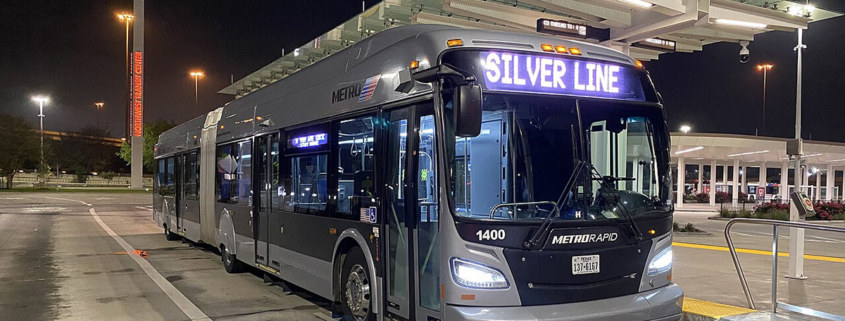More on METRO’s Uptown BRT Failure
A few smaller items this week:
- More on Houston’s BRT Failure with the Uptown Silver Line. Yet they’re just going to pretend it didn’t happen and plow ahead with the $1.5B Universities BRT line reducing Richmond to one lane each direction?!? 😠
“A Houston bus rapid transit route over dedicated bus lanes is attracting less than 10 percent of the riders that were projected for it. The Silver Line opened in August 2020 with the expectation that it would carry 14,850 weekday riders, but in fact it is carrying less than 900 riders per weekday, about 6 percent of projections…
One reason why ridership is low is that the line is slow. Schedules say that it takes 27 minutes to go 4.7 miles, which is an average of 10.4 miles per hour. The city’s regular local buses go much faster than that. Metro must have missed the memo that setting aside dedicated lanes to bus rapid transit is supposed to make the buses go faster, not slower.
This is just another example of why transit agencies shouldn’t spend hundreds of millions or billions of dollars on fixed transit infrastructure. No one can accurately foresee future transportation patterns, so relying on forms of transit that can be kept flexible — meaning buses sharing lanes with other traffic — is the safest and most cost-effective way to go.“
“In the last decade, the number of people who are homeless in California has soared, rising more than 40%. Meanwhile, in Texas, they’re seeing the opposite trend, with homelessness dropping by nearly a third.”
- An excellent oped by Charles Blain rebuffing the police union’s bizarre attack on the head of the Houston forensics lab.
- A $100 Billion Wealth Migration Tilts US Economy’s Center of Gravity South (no paywall link) – Some 2.2 million people moved to the Southeast in just over two years. That’s roughly the population of Houston.
“The numbers tell the story. For the first time, six fast-growing states in the South — Florida, Texas, Georgia, the Carolinas and Tennessee — are contributing more to the national GDP than the Northeast, with its Washington-New York-Boston corridor, in government figures going back to the 1990s. The switch happened during the pandemic and shows no signs of reverting.”
“Jews and Israelis who may feel uncomfortable at the rise of anti-Semitic sentiments among those in New York and California might find solace in states like Texas. Despite rising attacks and hate crimes on both sides of the American coast, the Lone Star State has remained unabashedly pro-Israel and open to business for those looking to relocate or expand their companies.
“People just love Israel here,” explained Toba Hellerstein, Executive Director of the Texas-Israel Alliance. “They just love Israelis, love Israel, and Israelis will come here and feel like they’re rockstars… There is a real romanticism, whereas in other states you have some ideas around Israeli startups and also have political reasons that make them less interested in working with Israel, in Texas you don’t have that.”
And ending on a lighter note, I really love this program: Paw-fect Fit | Houston Airports continues to expand its Volunteer Pet Therapy Program
This piece first appeared at Houston Strategies.
Tory Gattis is a Founding Senior Fellow with the Urban Reform Institute and co-authored the original study with noted urbanist Joel Kotkin and others, creating a city philosophy around upward social mobility for all citizens as an alternative to the popular smart growth, new urbanism, and creative class movements. He is also an editor of the Houston Strategies blog.
Photo: Houston’s Silver Line, by Ricky Courtney



